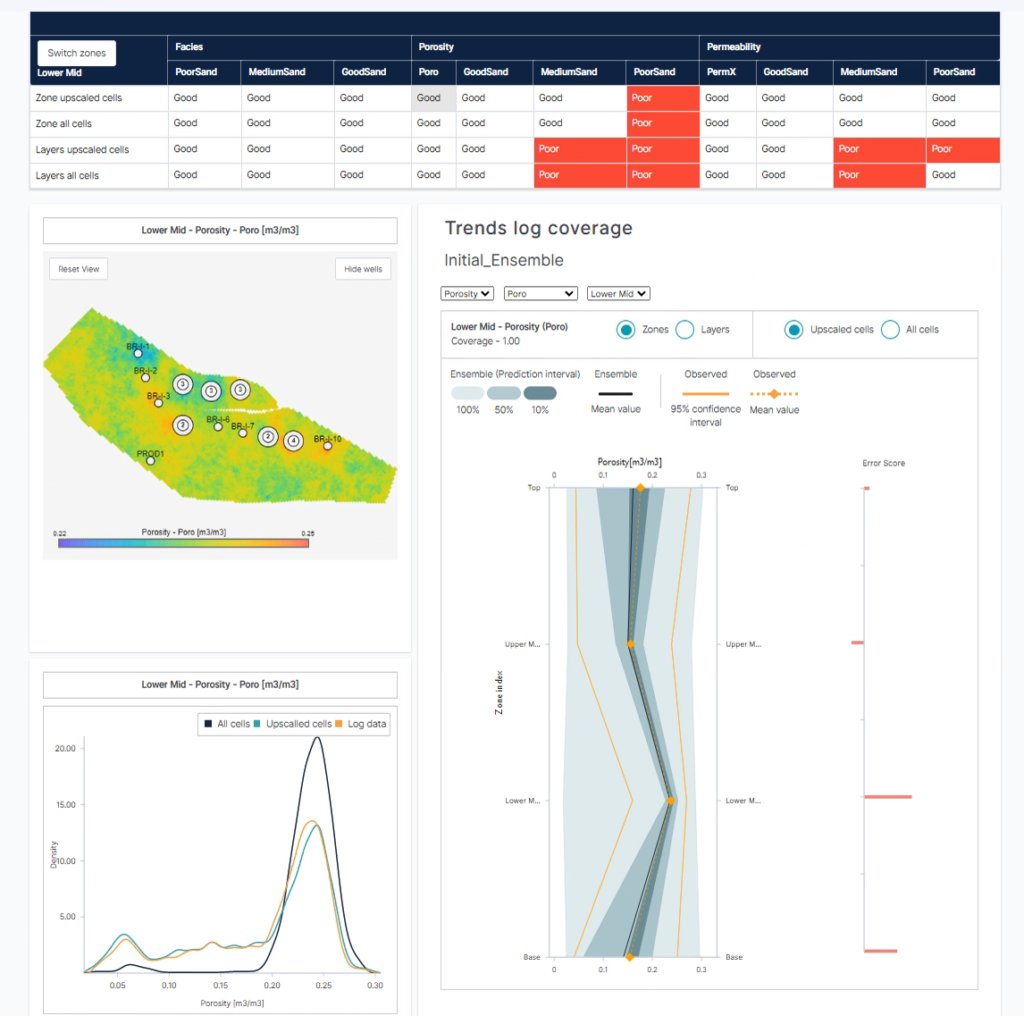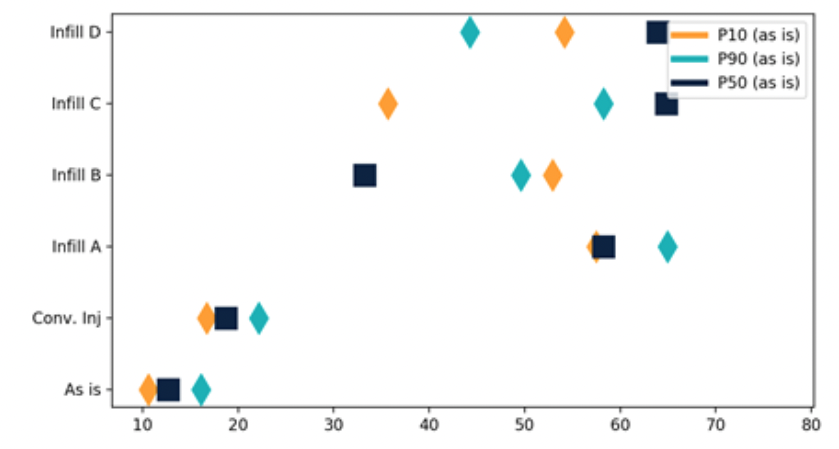Introduction
When using ensemble-based modelling, it is important to be able to quickly confirm that your ensemble captures all the measured data. If not then you need identify wells and/or zones in your model which are problematic. It is also necessary to be able to communicate model quality in a consistent manner so that quality assurance teams and decision makers are confident enough to use the model for decision making.
Using a case-based software product to do this work is difficult and requires a high level of software expertise. You would need to create workflows and processes that are not available out of the box in today’s modelling tools. Resoptima identified this issue and developed a totally new set of analytics applications specifically designed to both help the team gain insight into the subsurface and to ensure that your ensemble is ready to support the decision process.
In the IRMA solution, as well as analytics, machine learning and artificial intelligence are also put to work to shape clear alternatives going forward, with the risk and reward aspects always fully addressed.

Ensemble quality assurance
We have designed the Ensemble Analytics tools in IRMA to make it straightforward to QC the ensemble to confirm coverage of all data and trends. The tools can highlight where there are inconsistencies in the model, or perhaps where coverage of one set of data does not allow coverage of other data types. Overall this can give the team confidence in the quality of their ensemble or guide them to where problems exist so that an action plan can be made to improve the model quickly.
Understanding ensemble updates
When the ensemble-based model has been run through ResX to achieve a history match, the team has an opportunity to learn from the modifications that ResX has made. By looking at these data conditioning analytics the team can update their understanding of the subsurface and use this new knowledge to drive improvements in reservoir management.

Forecast analytics
Using the ensemble for forecasting also offers the opportunity to compare different strategies for the future and make more optimal decisions. The tools available for comparing forecasts will give the team insights not only into which strategy could perform better, but also the risk of each of the choices they are trying to decide between. Less certainty can still mean more confidence since with IRMA we are able to reframe prediction to a risk evaluation paradigm!
